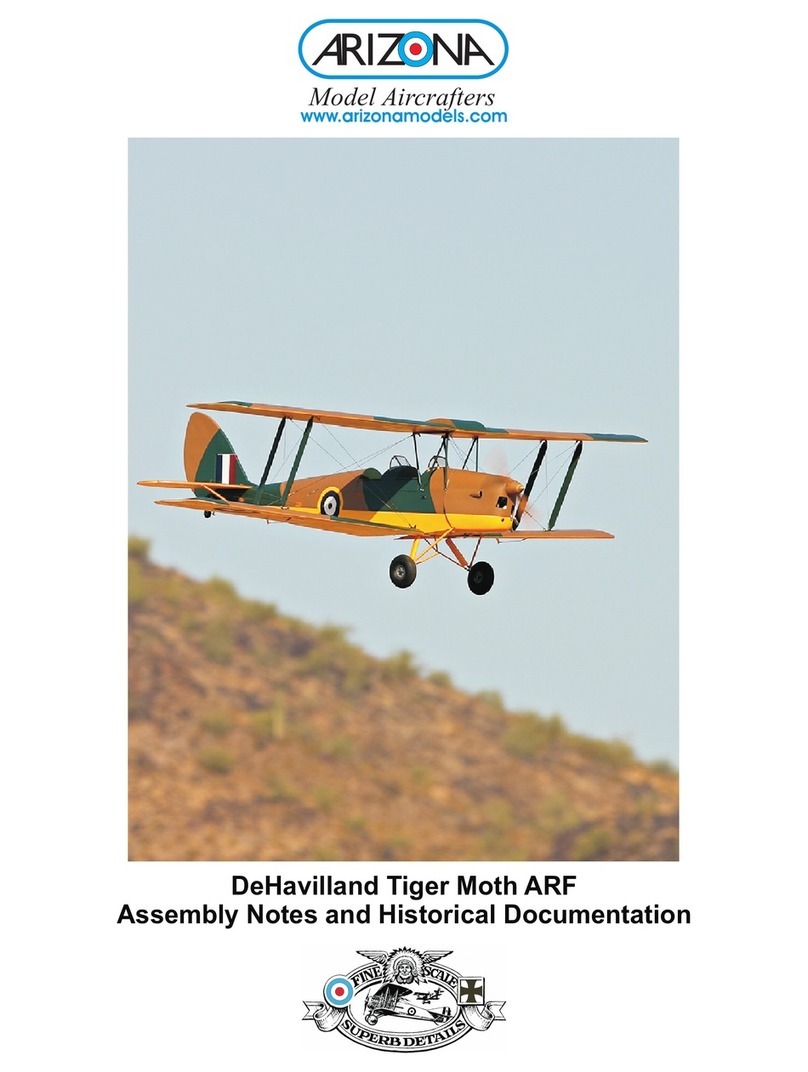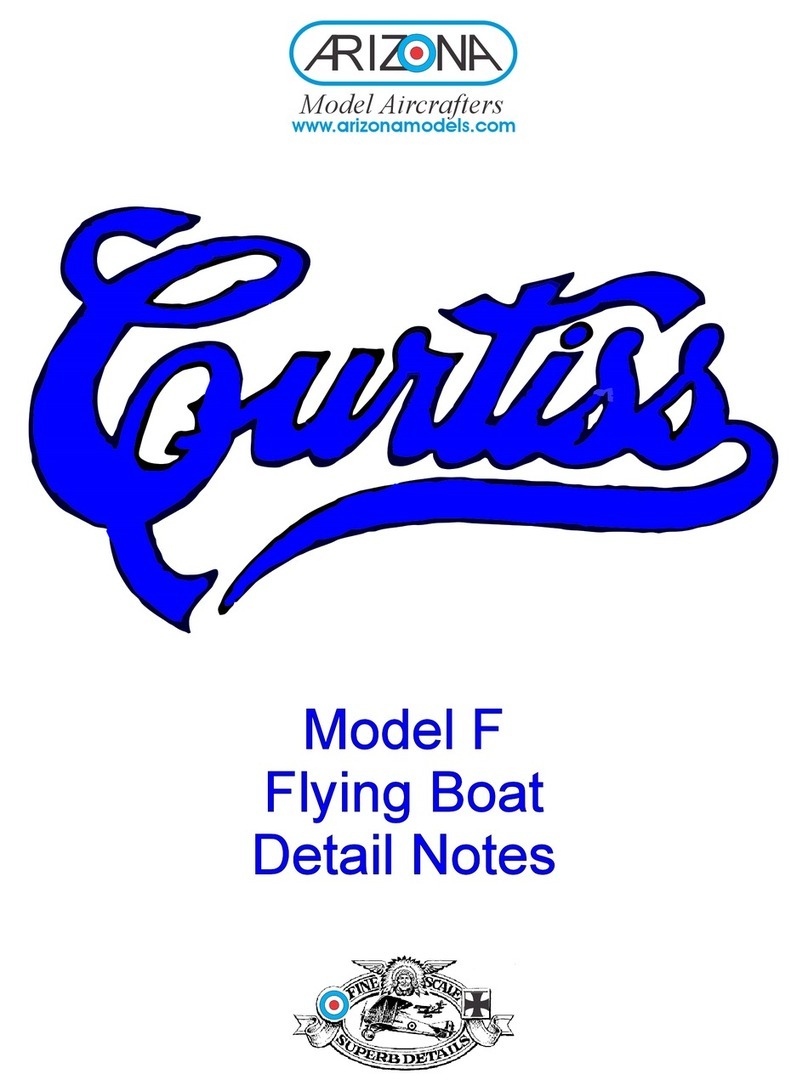Arizona Fokker Dr.I User manual
Other Arizona Toy manuals

Arizona
Arizona DIEUPORT 17 Quick start guide

Arizona
Arizona DeHavilland Tiger Moth Quick start guide

Arizona
Arizona Curtiss Model F User manual

Arizona
Arizona Siemens Schukert D.111 User manual

Arizona
Arizona Lozenge Camouflage User manual

Arizona
Arizona Hansa Brandenberg W.29 Owner's manual

Arizona
Arizona Albatros C.III Owner's manual

Arizona
Arizona SOMMER MONOPLANE User manual
Popular Toy manuals by other brands

FUTABA
FUTABA GY470 instruction manual

LEGO
LEGO 41116 manual

Fisher-Price
Fisher-Price ColorMe Flowerz Bouquet Maker P9692 instruction sheet

Little Tikes
Little Tikes LITTLE HANDIWORKER 0920 Assembly instructions

Eduard
Eduard EF-2000 Two-seater exterior Assembly instructions

USA Trains
USA Trains EXTENDED VISION CABOOSE instructions





















